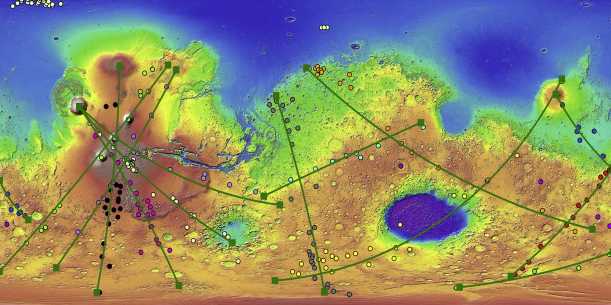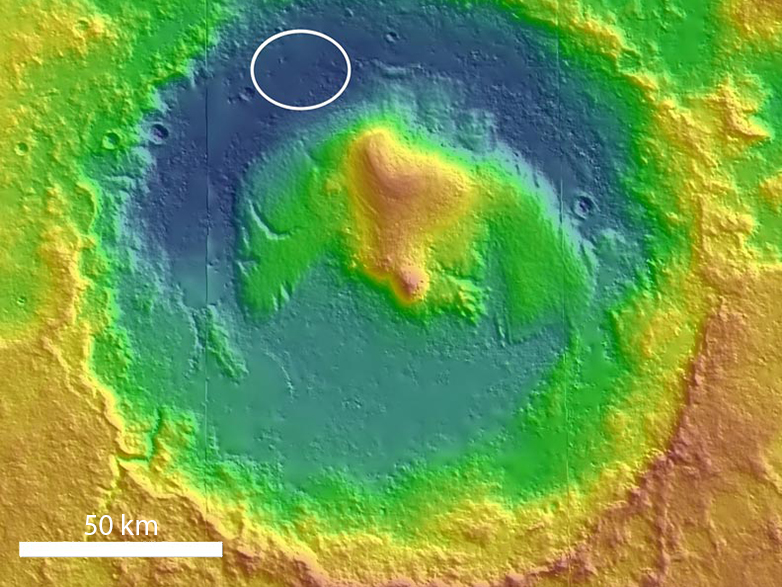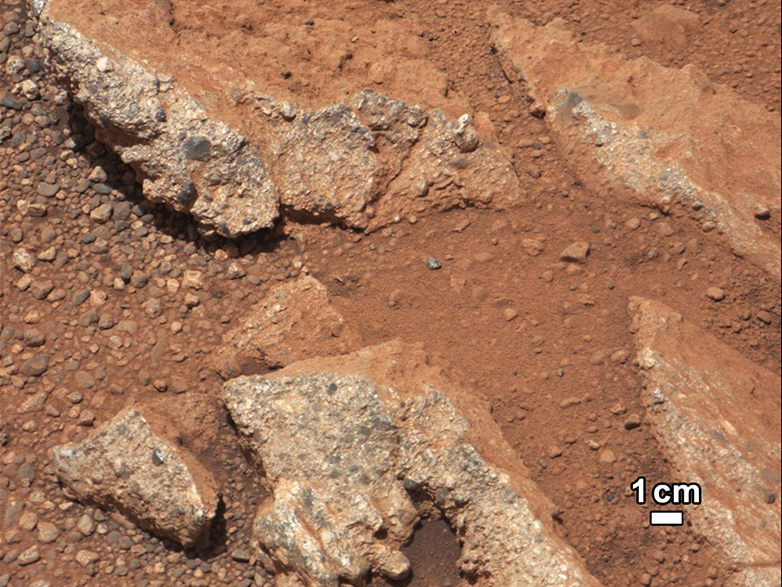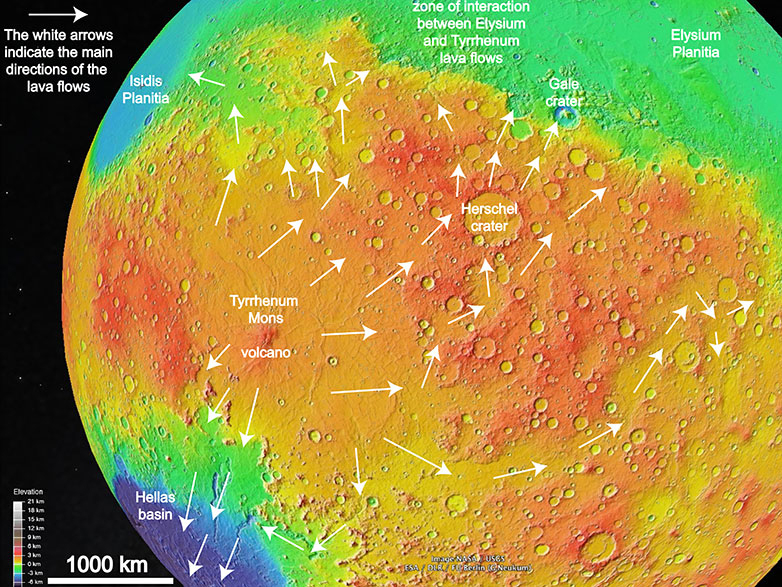Migration routes of mantle plumes discovered
Mars’s southern hemisphere has a tumultuous past that was marked by significant volcanism. Now an ETH researcher has discovered that these many volcanoes are not distributed randomly but in fact lie along specific lines. These could well correspond to different paths taken by mantle plumes.
Planetary scientist Giovanni Leone at ETH Zurich’s Institute of Geophysics has lost count of the hours he has spent poring over high-resolution satellite images to study structures on the surface of Mars. In the process he has noticed something that nobody had spotted before: the volcanoes present in Mars’s southern hemisphere are not spread randomly across the surface but rather lie on what are known as loxodromes – arcs with a constant bearing that cross all meridians of longitude at the same angle. These loxodromes start in the equatorial region and spiral southward to end at the Red Planet’s south pole.
Migrating mantle plumes
In Leone’s view, the fact that most volcanoes in the southern hemisphere of Mars can be connected up by such arcs suggests that there must once have been mantle plumes that rose to the surface at the equator and then migrated to the south pole over the space of hundreds of millions of years.
Mantle plumes are columns of magma that carry molten material from a planet’s interior to its surface. Columns such as these transport enough thermal energy to weaken the overlying crust so that volcanoes form in certain places. Terrestrial examples of this kind of volcanism include the Hawaiian archipelago and the Azores with the important difference that on Mars the lithosphere is stagnant and the plumes migrated under it while on Earth lithosphere migrates over fixed plumes.
Initially the Martian plumes were powerful enough to drive the formation of some gigantic volcanoes such as Olympus Mons, which stands at a height of 25 kilometres. The lava from these volcanoes flowed great distances, devastating vast areas of the planet’s surface. Over the course of the plumes’ southward migration they lost much of their power, which explains why the volcanoes found in the vicinity of the south pole are much smaller.
Unknown volcanoes unearthed
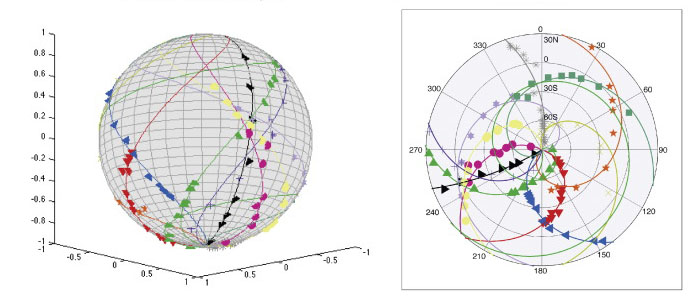
Leone discovered the Martian loxodromes by searching for volcanoes in high-resolution satellite imagery of the surface of Mars and plotting them on a map. In the process he not only found previously unknown volcanoes but also noticed that these could be logically connected. This fed his suspicion that the mantle plumes migrated along particular paths. But it was only when he projected the lines onto a globe that Leone recognised they were in fact loxodromes heading to the south pole of Mars.
“For me,” Leone says, “this study is another important piece of the puzzle, and a seamless fit with the giant-impact hypothesis.” This posits that a huge impact body must have collided with Mars at its south pole.
Plumes activity sparked by Giant Impact
Working with other ETH geophysicists, Leone has simulated the impact of a Moon-sized iron-rich celestial body on the southern half of Mars. According to this model, the giant impact might have occurred between four and 15 million years after the Red Planet formed. The theory goes that besides being the cause of the conspicuous Martian dichotomy, this impact triggered strong volcanism over the subsequent 400-500 million years.
This volcanism came to a complete stop as Mars cooled and its magnetic field eventually switched off over four billion years ago. As a result, the planet has remained extremely quiet in geological terms ever since, with neither plate tectonics of the sort experienced on Earth nor with any further volcanism.
Gale Crater filled with lava?
Leone sees his new discovery as further evidence that there can never have been great quantities of water on the Mars – and certainly that no seas or oceans can ever have formed there.
A few years ago, other scientists claimed to have discovered alluvial deposits in the Gale crater, the landing site of Mars rover “Curiosity”. Therefore, they postulated that this crater must have contained water and rivers in order to form pebbles. This postulate is dismissed by Leone. In his opinion, the material filling the crater is solidified lava that erupted from Tyrrhenum Mons and flowed in all directions to cover thousands of square kilometres. The lava first reached Herschel Crater before flowing out over its rim and continuing via a connecting channel to Gale Crater.
“This connection is a former lava tube, the roof of which has then collapsed. There are many such tubes on Mars; they are often mistaken for ancient water courses or for eskers,” Leone says.
Loads of Olivine found
Measurements taken by Curiosity confirm in Leone’s eyes that Gale Crater was filled with lava, not water. The rover has analysed and dated the rocks in the crater, and has found only basalt and olivine – the first being an effusive volcanic rock formed by cooled lava, the second being a common mineral contained in basalt.
If Gale was filled with water, the olivine would have transformed into serpentine over a period of between 100 and 10,000 years. Since no serpentine has been detected, he deems the theory that Gale held water to be false. “I see no indication of Gale having had a habitable environment,” the geologist says, adding: “But if people want to consider lava as colonisable, then yes, in that sense Gale Crater truly was habitable.”
References
Leone G. Alignments of volcanic features in the southern hemisphere of Mars produced by migrating mantle plumes. Journal of Volcanology and Geothermal Research. 11/2015; 309. DOI: external page10.1016/j.jvolgeores.2015.10.028call_made

